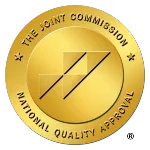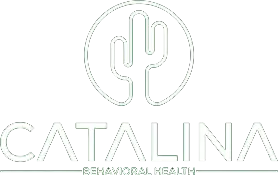Meth Addiction Withdrawal Symptoms and Treatment
Catalina Behavioral Health in Arizona understands that overcoming methamphetamine use is challenging. Our dedicated professionals support and guide clients navigating through meth withdrawal and recovery.
Let’s discuss the symptoms and treatment of meth withdrawal, also known as meth comedown. We’ll provide helpful tips for individuals striving to regain control of their lives.
How Long Do Crystal Meth Comedown Symptoms Last?
Meth hangover or comedown results from the body’s response after methamphetamine use. A meth comedown may last anywhere from a few hours to several days.
It depends on factors like the individual’s health, the amount used, and the last dose.
24 Hour Meth Detox and Rehab Helpline
The Physical and Psychological Risks of Using Meth
Methamphetamine use can have severe physical and psychological consequences. Some physical risks include heart problems, stroke, and respiratory issues. It may also damage the brain and organs.
Psychologically, meth use can lead to mood disorders, paranoia, and even the signs of psychosis. The drug has tricked your brain into dependency, making withdrawal seem daunting. These risks underscore the need for medical detox during a meth comedown.
The Basics of a Meth Comedown
A meth comedown is the body’s response to the absence of the drug after a period of use. Symptoms may range from mild discomfort to severe physical, emotional, and cognitive distress. In the worst cases, you may have suicidal thoughts.
Seeking professional care for a safe and effective recovery is crucial. A medical team monitors your progress and can administer medication to relieve discomfort.
How to Treat Meth Comedown Symptoms

Treating meth comedown symptoms should involve medical intervention, therapy, and support. Medical professionals can help manage physical discomforts.
You should not go “cold turkey” or try to stop using alone. No friend or family member has the skill set to help you during this time. No matter how much meth you use, a little or a lot, talk to our Admissions team for a confidential consultation today.
Some experience severe depression during the detox process or even violent behavior. Your friends and family members may love you. But they don’t have the tools to support you.
Substance use disorder can become a medical emergency. Meth comedowns (or other drugs) cause physical damage. A medically assisted detox can prevent severe withdrawal symptoms.
Having Resources and Support to Overcome the Crash
Treatment centers have staff to monitor your blood pressure, body temperature, and vital signs as meth leaves your body. Improper detox can be life-threatening. But you’ll be in good hands and able to cope.
You’ll start counseling once you feel well enough. Therapy can address the psychological aspects of the withdrawal process. You may grieve the loss of your meth, or even feel depressed. Counselors understand and can recommend the best ways to deal with this.
Our professionals can also determine whether you have an underlying mental illness that caused you to abuse meth.
What is Crystal Methamphetamine: Why Is It So Addictive?
Crystal methamphetamine, aka crystal meth, is a powerful and addictive synthetic stimulant drug. It is a form of methamphetamine, a derivative of amphetamine. The chemical has stimulating effects on the central nervous system. It appears as clear or bluish-white crystals. It is smoked, snorted, injected, or ingested.
Several factors make methamphetamines so addictive:
- Intense euphoria: When consumed, it releases large amounts of dopamine in the brain. That’s a neurotransmitter responsible for feelings of pleasure and reward. It results in intense euphoria. It makes the user feel invincible. The pleasurable feelings of the drug are much more potent than other stimulants, making it addictive.
- Immediate onset: It produces immediate and powerful effects. Users often feel the drug’s impact within seconds to minutes. This rapid onset reinforces the connection between taking the drug and experiencing pleasure. The fast high contributes to its addictive potential.
- Long-lasting high: The effects of the high can last for several hours and sometimes even days. That depends on the dose and the individual’s metabolism. This long-lasting high can appeal to users. It leads them to consume more of the drug to maintain the pleasurable sensations.
- Tolerance and dependence: The brain becomes less responsive to repeated substance abuse. Users develop a tolerance. That means that users need to consume higher drug doses to achieve the same desired effects. It increases the risk of addiction. Additionally, the brain may become dependent on the presence of the substance to function. That can make you feel worse when not using.
- Psychological factors: The intense euphoria of meth make users feel great. These perceived benefits can create a psychological dependence on the drug. It becomes difficult for individuals to stop using, even when they see its harm.
Is Psychological Addiction To Meth Possible?

Methamphetamine creates a powerful psychological addiction. The intense feelings of euphoria drive it. These can make it difficult for individuals to stop using the drug. The psychological addiction to meth contributes to the challenges faced during meth withdrawal.
Physical Dependence on Meth and What to Expect During Detox
Over time, meth use can lead to physical dependence. That makes it even trickier to stop meth abuse. Meth recovery can mean physically and psychologically taxing symptoms. For those accustomed to slamming meth (IV use), the dependence can occur more quickly and the comedown (alongside withdrawal symptoms) often has a quicker onset and greater severity.
Seek qualified rehab centers like Catalina for support during this process. Our expert staff are best equipped to help you end drug use and reduce the risk of relapse.
If your loved one is enduring a meth comedown and does not want to seek treatment but poses a clear risk to themselves or others, in some cases, a court order can force someone to attend rehab in Arizona.
What Happens 12 To 24 Hours After Use?
In the first 12 to 24 hours after meth use, individuals may require medical attention during the first hours of a meth comedown.
These can include irritability, agitation, anxiety, and an intense craving for the drug. Physical symptoms such as fatigue, cravings, sweating, and muscle aches may also be present during this period.
Get Immediate Help to Stop Using Meth
What Happens Two To Three Days After Use?
The discomfort may intensify two to three days after meth or other substance use.
Individuals may experience increased fatigue, depression, anxiety, headaches, or muscle pain. This period can be particularly challenging. It makes professional help even more critical.
Withdrawal symptoms may peak in intensity between 48 and 72 hours after stopping use. These can include fatigue and mood swings. You might also still have some physical discomfort. But these will begin to recede. It is vital to have professional support during this period. Professionals will manage symptoms and reduce the risk of relapse.
Days Four to Seven After Your Last Meth High
In the following days, the drug’s effects may continue. But the intensity may begin to subside. This period may still include emotional ups and downs. But things continue to progress. You’ll start to feel much better.
Ongoing support from professionals, friends, and the community is crucial to prevent relapse.
After Week One of Meth Detox
After the first week of meth detox, individuals see physical and emotional improvements. The drug’s effects and cravings subside, and feelings of hope and positivity may emerge. Continue with professional support and therapy during this stage. These address lingering concerns and build a strong foundation for long-term recovery.
Meth Abuse Disorder and Your Mental Health

Meth abuse disorder can have a lasting impact on an individual’s mental health. It can worsen mental illnesses or create new ones. Think of severe depression and psychosis from meth. These can become a reality all too easily for sustained meth users.
It can also cause minor outcomes, like decreased appetite or sleep disruptions while you heal. The recovery process must address these to manage substance abuse recovery.
What Does the Meth Comedown Period Look Like?
A meth comedown may present differently for each individual. However, some common symptoms include fatigue, irritability, and intense cravings. Physical symptoms such as sweating, headaches, sleep difficulty, and muscle aches may also be present.
The severity and duration of these symptoms can vary. It’s essential to have professional support, and our team at Catalina Behavioral Health is well-versed in helping our clients through the worst of meth withdrawals.
5 Tips to Get Past the Comedown and Stay Clean
Whether you used meth alone or with other substances, here are a few guidelines:
- After The First Week Of Stopping Meth Use: Continue with therapy and support groups. These sessions address ongoing concerns and maintain progress.
- Physical Effects of Meth Post-Comedown: Focus on rebuilding physical health. Treat yourself to drinking plenty of water, proper nutrition, exercising, and getting enough sleep. Cravings begin to decrease.
- Pay Attention to Hydration, Nutrition, Sleep, Nutrition, And Fluids: Focus on self-care. Establish healthy routines to support overall well-being.
- Consider Support Groups: Connect with others who have experienced similar struggles. Share insights and encouragement.
- Stay Busy to Stay Distracted: Some people relapse out of boredom. Try hobbies, activities, and social connections. These will provide a sense of purpose and fulfillment.
Meth Withdrawal Symptoms and Treatment Options

Meth addiction treatment can cause distress at first. Withdrawing after you use meth requires professional support.
Therapies at an inpatient treatment or outpatient treatment center may include a combination of these:
- Medical intervention to address physical symptoms, such as cravings and getting adequate sleep and fluids while recovering
- Therapy to work through psychological challenges
- Support groups to provide ongoing encouragement and guidance
- Relapse prevention strategies for full, lasting recovery.
Individuals can overcome the challenges of meth withdrawal with a comprehensive treatment plan. It’s time for a healthier, more fulfilling future.
Licensed and Accredited Treatment Programs
Are You Ready for a Clean Slate? Join the Catalina Family Now!
Understanding the nature of drug abuse and the need for professional help is a good place to start. With proper care, individuals can overcome their meth addiction. Catalina Behavioral Health provides a compassionate, supportive environment for recovering clients.
Our holistic treatment center addresses recovery’s physical, psychological, and emotional aspects of meth recovery. We ensure that each client receives the necessary treatment to regain health.
It is time to work towards a brighter, healthier future and leave struggling in your past. You deserve it! Catalina Behavioral Health can guide this journey. We will offer hope, understanding, and support every step of the way.




